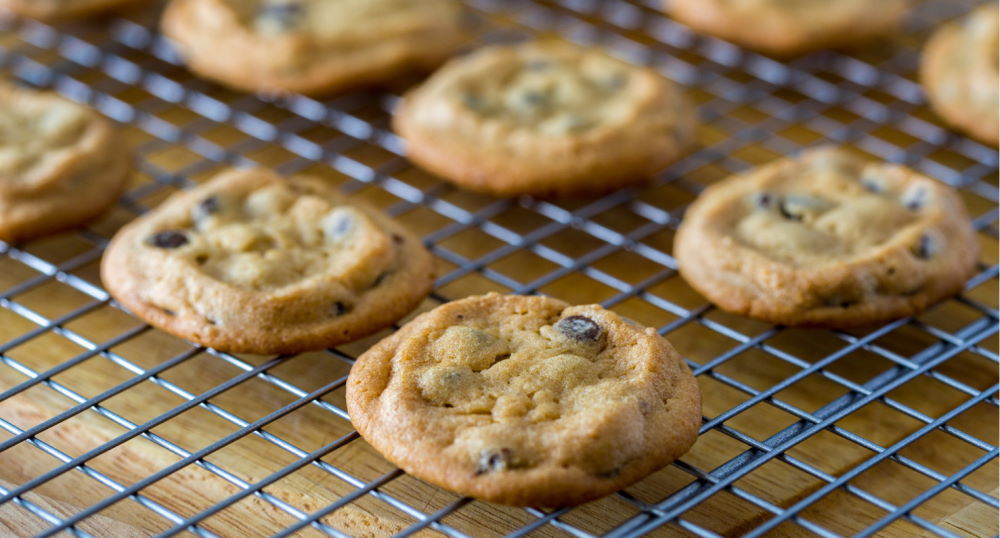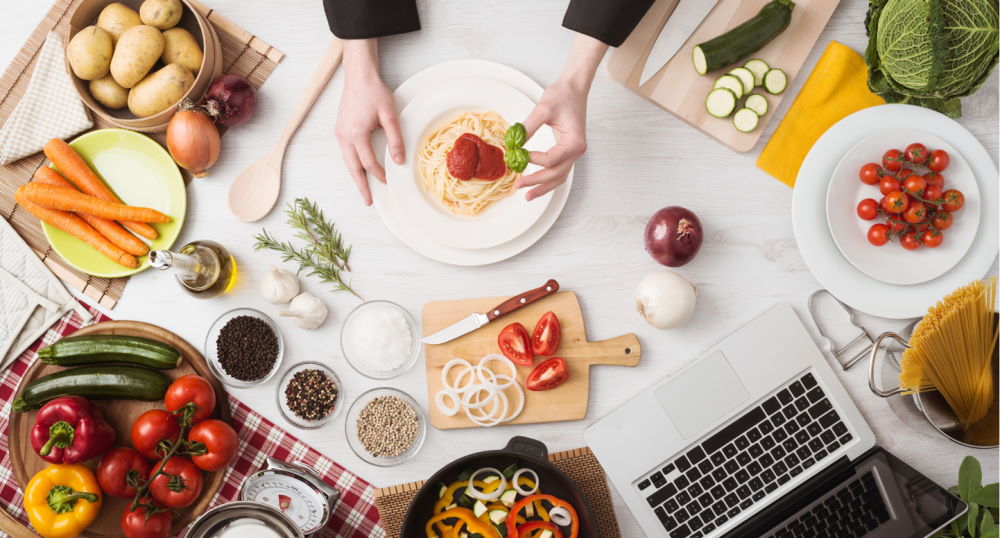Not all cannabis consumers are interested in smoking something. Some people may be worried about the affects of inhaling smoke, and others may just be looking for different consumption methods that allow them to be more creative. That’s where cooking comes in.
If you are interested in edibles, there are plenty of options at your local Cheeky’s, but if you want to really explore the world of edibles, it is time to learn how to cook edibles. By making your own edibles, you will gain complete control of the recipe, with the ability to make it healthier, sweeter, stronger or saltier.
Cooking with cannabis is a fun alternative to smoking cannabis. Being easier on the lungs, there is no chance of consuming tar or butane when you blend your cannabis into your next meal. For that reason, cannabis becomes ever more accessible to all people when the option of cooking is introduced.
If you are new to cooking with cannabis, this article is for you. We will share our favourite tips for bringing cannabis into the kitchen, along with a couple fundamental recipes, from author Nikki Furrer of A Woman’s Guide to Cannabis.
Tips for Cooking with Cannabis
Cooking with cannabis can appear intimidating, but it is not much different than regular cooking. There is just an extra step: decarboxylation. Plus, cooking with cannabis does not require any special tools or equipment – just the standard equipment will do!

You can infuse almost anything you cook with cannabinoids, by decarboxylation. During the preparation phase, you will infuse your butter or oil with cannabis, which means you can cook anything you want that requires fat. Instead of using regular butter or oil, you use your homemade cannabis-infused butter or cannabis-infused oil.
Choose a strain that fits.
Perhaps the biggest choice you will have to make when it comes to cooking with cannabis is choosing a strain. There are hundreds of strains to choose from, so without being overwhelmed, you will want to select something that’s best for you.
To start, what is your goal? Decide if you want a more sedative feeling or a more energized feeling from your cannabis-infused food. Indica plants are generally considered to produce more of a relaxed body high, while sativa plants are known to produce a more uplifting high, and hybrid plants are a little bit of both.
Also consider the terpenes you prefer, and if they support the goal of your high.
Then, consider the quality. You do not need the most expensive strain available, but you also do not want to cheap out on the most inexpensive strain. Quality matters, and you will end up ingesting it, so choose wisely.
Figure out how much cannabis you need.

Trying to determine how much cannabis you need for your recipe can be confusing, especially for beginners. If you are following a cannabis-infused recipe, there should be some guidelines, but without a recipe it can be hard to know.
There are edible dosage calculators available online, which will tell you how much THC your cannabis-infused food will have in it. All you need to know is the amount of weed you’re adding, the amount of butter or oil you’re using, and the THC levels of the cannabis.
In the kitchen, a little bit of cannabis goes a long way. For example, if you purchase 5 milligrams of cannabis with a THC level of 20%, you’re left with 1,000 milligrams of THC. Once you have decarboxylated your weed (see next tip), you’re left with about 900 milligrams. If you assume your other ingredients absorb just 50% of the THC, you’re left with 450 milligrams. Portioned out by 5 milligram serving, and you’ve got a lot of edibles on hand.
It’s important to be mindful about dosage – more is not always better. If you have eaten edibles with 25mg, that does not mean the same amount in home cooked food will produce the same affects. It is best to start slow by choosing a lower dose. If you are a beginner, start with 1 to 5 milligrams of THC – you can always increase your dose next time.
Decarboxylate before you cook.

Decarboxylation or decarb is the intimidating term for the process of heating cannabis until the THCA has converted to THC (tetrahydrocannabinol). This is the first step when creating any infused product. CBDA – the acid form of cannabidiol – is also present in the cannabis plant. It converts to CBD – the pain-relieving cannabinoid – when heated.
To convert THCA to THC, you will need to bake your bud before you cook your food. It must be done before you cook your food, since the heat of cooking the food is usually not hot enough to convert THCA to THC.
Decarboxylation causes a heavy scent, so turn on the vent, open the windows, and position fans to blow the scent to the great outdoors.
Decarboxylation step-by-step:
1. Preheat the oven to 250ºF.
2. Coarsely grind the flower. Place the ground flower onto a baking sheet in a thin layer. Cover the baking sheet with foil.
3. Bake for 30 minutes*. Pull from the oven, then shake the tray to stir. Return to the oven for another 30 minutes, or until the flower has turned brown and there is no green plant matter left*.
4. Remove from the oven, keep covered, and allow to cool for 15 minutes. Remove foil.
5. You can then store your decarboxylated flower in a jar, in a cool, dry place, or use it immediately (to make cannabutter).
*Note different strains may need more time in the oven. THCA tends to convert more quickly to THC than CBDA converts to CBD. THC-heavy strains of flower might only need forty-five minutes, while high-CBD strains may need an hour to fully convert the cannabinoids.
*Adjust the cook time as needed to get the flowers bone dry and to a nice warm brown colour. If any bits of cannabis are still green, there is still THCA in the plant matter, which means it is not as potent as it could be. At 250ºF, the flower will not burn, so do not worry about baking it too long.
See how to make cannabutter in the next tip.
Choose your binding ingredient.

Now that the cannabis is decarboxylated, the next step is to extract the cannabinoids and terpenes from the flowers and infuse into a solvent like butter or oil.
How to make cannabutter:
Ingredients
- ½ cup plus 2 tablespoons unsalted butter
- 3.5 grams (for a mild effect) or 7 grams (for a strong effect) decarboxylated cannabis flower
- 2 tablespoons liquid lecithin Equipment
Equipment
- Medium-sized pot
- Small jar or glass measuring cup
- Fine-mesh strainer or cheesecloth
- Airtight jar
1. Fill a medium-sized pot halfway with water and set to boil.
2. In a small jar or glass measuring cup, combine the butter with the cannabis flower. Set the uncovered jar in boiling water. When the butter has melted, whisk the mixture to evenly coat the cannabis.
3. Reduce the heat and simmer the mixture for 1 hour. Add more water as needed.
4. Allow the mixture to cool, then strain it through a fine-mesh strainer or cheesecloth into your storage jar. Firmly press to squeeze out every single drop of infused butter. It will result in ½ cup of butter.
5. Add the lecithin and stir well until blended.
6. Store the cannabutter in an airtight jar in the fridge for up to a month or freeze for up to 6 months.
Now your cannabutter is ready for cooking with!
How to make cannaoil:
Ingredients
- 1/3 cup oil
- 3.5 grams (for a mild effect) or 7 grams (for a strong effect) decarboxylated cannabis flower Equipment
Equipment
- Medium-sized pot
- Small jar or glass measuring cup
- Fine-mesh strainer or cheesecloth
- 2oz. bottle with dropper top
1. Fill a medium-sized pot halfway with water and set to boil.
2. In a small jar or glass measuring cup, combine the oil and cannabis. Set the container in boiling water.
3. Simmer for 1 hour.
4. Allow the mixture to cool, then strain in through a fine-mesh strainer or cheesecloth into your bottle. Firmly press to squeeze out every single drop of infused oil. Strain again.
5. Store the extraction in a 2-ounce bottle with a dropper top in a cool, dry place for up to 6 months.
The cannabis-infused cooking process all starts with choosing a strain. At either our Maple Ridge or Kitsilano location, Cheeky’s Cannabis has plenty of selection and a friendly staff to help you decide.
